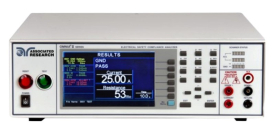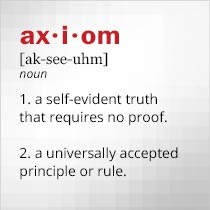Electrical Safety Compliance Analyzers Helps Make More Reliable Designs
March 01, 2023
 |
Before an electronic product is ready for use, a user’s safety must be ensured. Electrical safety compliance testing is a means of checking the safety of a new product as it enters its manufacturing phase. Certain measurements can check how a product will respond to voltage overloads or surges and whether it is properly designed and assembled for various operating conditions and safe for a user. Requirements for the measurements change according to geographic region and pertinent electrical safety standards, calling for versatile test equipment capable of applying and measuring AC and DV voltages. Such units can not only render an electronic product safe for use, but also save the time and expense of manufacturing a flawed product.
Electrical safety compliance testing is conducted according to standards set by professional safety organizations, such as Underwriters Laboratories and the American National Standards Institute in the United States. The IEC’s standards typical fill categories or “CAT” subdivisions suited to the power infrastructure of a region of interest, such as single- and three-phase power sources. The IEC has developed standards for each market, such as IEC 60335 for household appliances, IEC 60601 for medical equipment, and IEC 60065 for video products.
Measurements for electrical safety compliance testing help find defects in a product as a result of poor designs or manufacturing errors. Electrical safety testing of an electric vehicle (EV), for example, ensures the safety of the vehicle’s drivers and passengers with powerful lithium-ion (Li-ion) batteries, whether on the road or when stopping at an electrical recharging station. Voltage rails at a charging station can run as high as 2.5 kV in attempts to speed the Li-ion battery charging process. Effective grounding is essential for the safety of an EV and all who use it.
Standard measurements for electrical safety compliance testing include checks of the ground bond for a device under test (DUT), insulation resistance (poor insulation around conductors can lead to short circuits), withstanding voltage (for example, how much voltage cables can handle without damage), leakage current, and overload testing (for example, to assess the effects of applying a high voltage to a connector or port not designed for it, such as high supply power to a digital connector).
Securing Safety
Many of the measurements required for reliable electrical safety compliance testing can be performed with a single multifunction analyzer if it provides the performance levels required by the appropriate electrical safety standards. Analyzers under consideration can be compared by performance in essential tests, such as maximum AC and DC withstanding voltages, maximum resistance for insulation resistance (IR) measurements, and maximum current for ground bond measurements. Associated Research, Inc. and Chroma ATE, Inc. are among the manufacturers of electrical safety compliance testers.
The Associated Research HypotULTRA® 7850 and 7854, for example, are automated dielectric analyzers designed to perform safety testing safely without sacrificing manufacturing productivity. Each analyzer includes a front-panel display for stand-alone use; each also features an assortment of computer interfaces, with Ethernet, USB, and RS-232 in both, GPIB standard in the model 7854 and optional in the model 7850. The analyzers perform many of the measurements needed for safety compliance testing, including assessments of AC withstanding voltage, DC withstanding voltage, insulation resistance, and circuit continuity. The main difference between the analyzers is the added ground bond testing capability of the model 7854 in which high current at low voltage is applied to a circuit to check the quality of ground points.
Both analyzers perform AC withstanding voltage measurements with output voltage as high as 5 kV AC, adjustable with 1-V resolution. They provide sinewave output waveforms with user-selectable 50- or 60-Hz frequency and accuracy within ±0.1% of the displayed value. AC withstanding voltage measurements can be set from 0.000 to 9.999 mA with 0.001-mA resolution and from 10 to 99.99 mA with 0.01-mA resolution. Ramp-up and down times to a from a desired power value range from 0.1 to 999.9 s. The units can be adjusted for continuous power or for dwell times from 0.2 to 999.9 s at any setting. DC withstanding voltage measurements can be performed with output voltages as high as 6 kV DC, with less than 4% DC output ripple. Current can be adjusted from as low as 0 to 0.9999 μA with 0.0001-μA resolution to as high as 1000 μA to 20 mA with 1-μA resolution.
The models 7850 and 7854 analyzers are also useful for continuity and insulation resistance. Both can perform continuity measurements at maximum current of 1 A. At the maximum current, resistance can be set from 0.000 to 1.000 ?. With less current, testing can be performed with greater values of resistance, as high as 10 k? resistance for 10 mA current. Both analyzers also provide insulation resistance measurements from 10 to 6000 VDC, adjustable with 1-VDC resolution, over a resistance range of 0.1 to 99.99 M? with 0.01-M? resolution.
Model 7854 adds ground bond testing to evaluate the strength and consistency of ground connections. For these measurements, it operates over an output voltage range of 3 to 8 VAC, adjustable with 0.01-V resolution, and output current from 1 to 40 A, tunable with 0.01-A resolution. The model 7854 offers maximum loading of 10 A for resistance as high as 600 m?, 30 A for resistance as high as 200 m?, and the full 40 A current for resistance as high as 150 m?. The rack-mountable units measure 16.92 × 15.75 × 3.50 in. (430 × 400 × 88.1 mm) with enough embedded memory to store 2000 total test steps or as many as 200 test steps per saved file.
When increased electrical safety measurement capability is needed, consider the Associated Research 8207 advanced electrical safety compliance analyzer, part of its OMNIA® II Series of equipment. It provides all the safety measurements of the model 7850 and 7854, along with leakage current testing using a human body model to detect unwanted current flowing from an electronic product when a human user unwitting becomes part of a path to ground for the excess current. Model 8207 also contains an AC power source for dynamic functional testing of a DUT. The AC source supplies as much as 277 VAC and 16 A.
The Chroma 19032 electrical safety analyzer also performs leakage current testing along with AC and DC voltage withstanding, insulation resistance, and ground bond measurements. It includes the capability for functional testing of DUTs at current to 20 A as well as light-emitting-diode (LED) electrical safety testing and can perform EV electrical safety testing by combining ground bond, withstanding voltage, and leakage current tests. The model 19032 is equipped with a standard RS-232 interface and GPIB as an option. The company’s electrical safety test (EST) software is an example of a handy personal computer (PC) software tool that can control simple tests and provide effective data analysis.
Model 19032 has the flexibility to work with many leakage current scanners from different suppliers to perform general appliance, medical, and custom leakage current measurements according to the requirements of different domestic and international standards. It can combine different scanners as needed. It features an automatic open/short safety test and operates over withstanding voltage ranges of 0.05 to 6 kV DC and 0.05 to 5 kV AC, with 2-V resolution. When higher-potential testing is necessary, the company’s model 19056 Hipot Analyzer covers withstanding voltages as high as 10 kV AC and 20 kV DC.
Lastly, consider the Chroma 19036 Wound Component EST analyzer, with as many as 10 output channels for saving test time by performing multiple measurements simultaneously. Its multichannel scanning capabilities make it well suited for electrical safety testing of wound components, such as electric motors. Information on any of these and additional units and accessories for electrical safety compliance testing can be found on the Axiom Test Equipment website (www.axiomtest.com).
Back to BLOG








